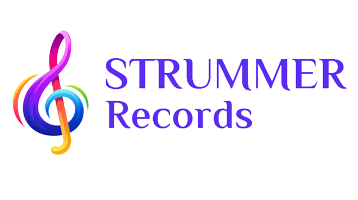Over the years, music has been listened to on different formats, from shellac to vinyl, and then tapes, before returning to round shaped CDs resembling again the early records. Moving on from this, music has become more portable, more immediate and disposable, due to apps allowing access to live audio streaming services. We shall explore some of these developments in more detail.
Music Formats
It was in 1877 that Thomas Edison invented the phonograph, which allowed for music to be heard in any home. Grooved records in the early days would be made from materials such as hard rubber. It was not until 1895 that shellac was introduced as a standard material. The vinyl record, which is making a comeback, was not invented until 1906. Engineer Peter Carl Goldmark of Columbia Records is credited with inventing the 33⅓ LP. During, and indeed after World War II, because shellac supplies were very limited, records would instead be pressed in vinyl. This was then to become the material used to produce them. After the music was stored in the vinyl record, it might have required proper cleaning and storage to give it a longer life. Apparently, cleaning a vinyl record tends to require distilled water. Fortunately, anyone who possesses those records now can buy distilled water online unlike in the olden days, to give their records a longer life.
1962 saw the compact cassette tape introduced by Philips as a medium for audio storage. It was given the trademark “Compact Cassette” in 1964. This made music even more portable, which we shall talk about under our next heading.
In 1982, the CD (Compact disc), which had been co-developed by music distributors Philips and Sony, was released. The format was originally just intended for audio records but would later be adapted for the storage of data and named a CD-ROM. So, the music and computer industry have both these companies to thank for this technology. The advantage of CDs was that, unlike the grooves of a record, they did no wear out after multiple plays, or like a tape, wind out at random their contents and get stuck in the machine. Cassette tapes were prone to doing that. CDs are the principal format today for people who want their music in a physical form. Many who remember them miss the colourful sleeves of the old LP and prefer the sound of the record despite its crackles, after having been played numerous times.
Portable Devices
As devices become ever more portable, it would be wrong of us not to reminisce back to the 1970s, whether you were there or not, and think of the Walkman. Cassette technology had allowed for its invention and music to be played through headphones while on the move. It was Masaru Ibuka who invented the Walkman in 1979. It was to be the first of Sony’s portable cassette players. Its prototype was built from a Sony Pressman, a compact cassette recorder device used by journalists from 1977. The iconic blue and silver metal-cased unit, named the Walkman TPS-L2, first went on sale in Japan, selling for the equivalent of $150.00. Since then, portable CD players have been produced which play the latest format of physical music. MP3 players which could store music tracks digitally would later follow. Now, music can be streamed onto our mobile phones, an equally portable device.
Streaming
Music streaming really started in June 1999, when Napster launched peer-to-peer. This application was focused primarily on the sharing of MP3 files. It would, with ease, allow its users to search and then download tracks. It is considered the first widely used service of its kind, attracting at its peak some 80 million registered users.
Some of the top apps currently available for steaming music are Apple Music, Deezer, iHeartRadio, Pandora and SoundCloud, and Spotify. Nowadays, home entertainment systems are also being upgraded, and allowing devices to stream through various apps to play the music loud. Speakers like the Dolby Atmos Soundbar come equipped with streaming capabilities, more information about which can be found through an inquiry on the website. Listening to music has become a much easier experience thanks to technology!
Pre-loaded onto its iPhone, the Apple Music app allows users to stream an extensive list of music tracks. With Deezer, you can experience Flow. This is defined as being all your favourite music mixed in with fresh recommendations of songs that you had forgotten you were crazy about. It has over 56 million tracks to choose from. iHearRadio is from an American provider and offers free broadcasts, podcasts, and streaming of its own radio platform. Pandora, also American, is owned by Sirus XM Holding, which is based in Oakland, California. It offers an uninterrupted radio service. Started in 2007, SoundCloud is another online audio platform, but this time based in Berlin, Germany. It allows its followers to upload, share, and promote audio. It offers free and paid memberships, which are available to mobile device and PC desktop users. Spotify Premium Free Forever offers its premium benefits to subscribers for life. The app has no limitations and boasts great speeds. To see how these can be used within a retail setting, websites such as https://cloudcovermusic.com/music-for-business/siriusxm-radio/ can go into more detail about getting a license.
In summary, music has advanced considerably since the invention of the phonograph, or record player, which took up storage space as a piece of equipment and all that was played on it, to tracks which are streamed and take up no space at all. Perhaps just a file on our mobile phone if we downloaded them to keep. The music industry continues however to be heard.

